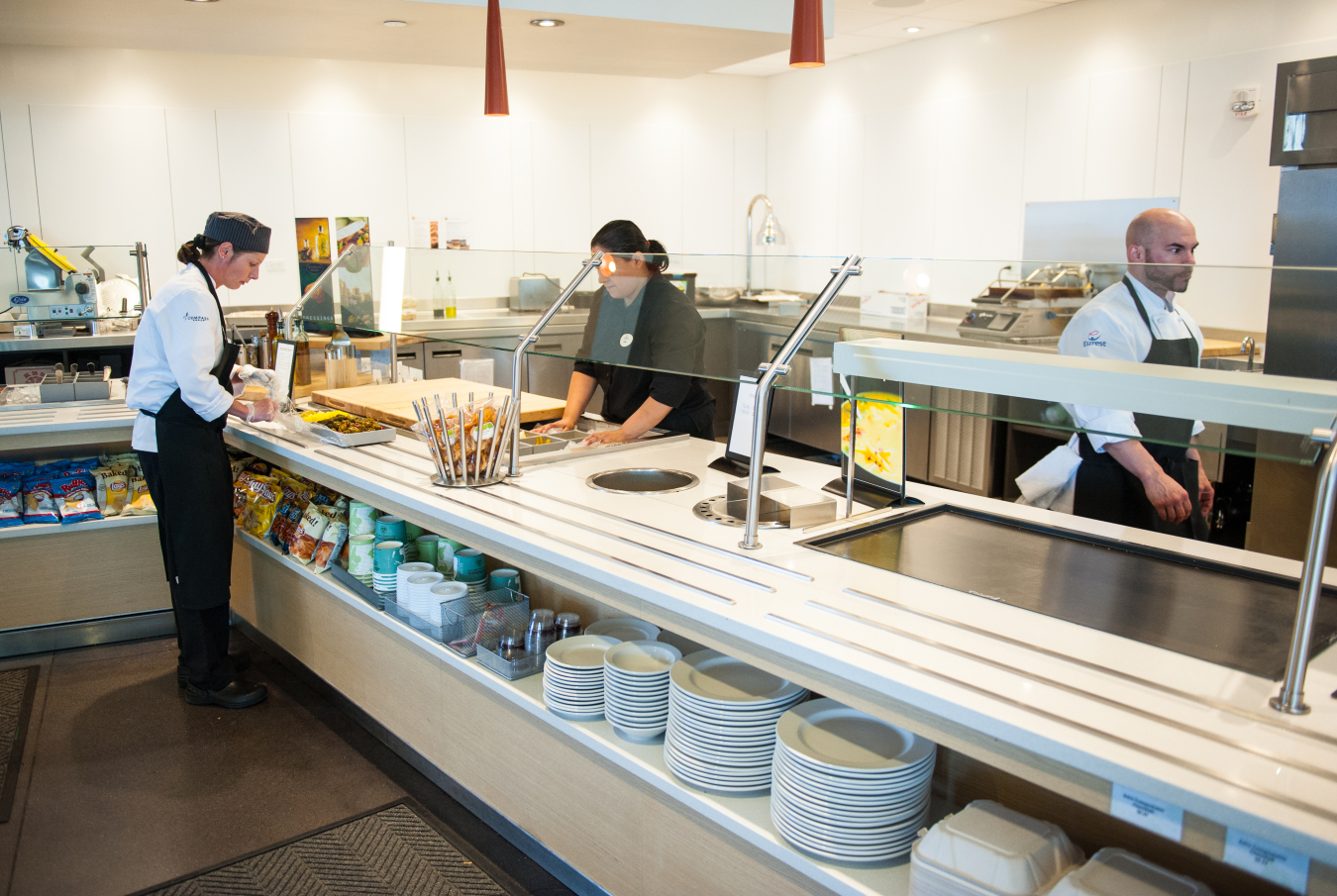
Workers stock the CAFE at the National Renewable Energy Laboratory in Golden, Colorado.
Kitchen and cafeteria operations could account for up to 20% of site energy consumption. Despite the wide range of appliances within a food service operation and the resulting energy intensity of a particular building, the appliance selection process and best-practices design strategies apply to all food service facilities.
Specify energy-efficient appliances, including dishwashers, solid-door freezers, fryers, hot-food holding cabinets, ice machines, refrigerators (walk-in and reach-in), and steamers. In addition, choose low-flow hot-water fixtures to minimize both water and energy use.
For ventilation, emphasis should be on designing exhaust ventilation systems with proper layout of cooking equipment and proper hood design to minimize total airflow while still providing adequate exhaust flow for complete capture and containment of the cooking effluent. After minimizing ventilation needs, consider variable-speed exhaust hood flow systems, otherwise known as demand-controlled kitchen ventilation (DCKV) systems. The design and specifications of a kitchen hood system, including the exhaust hood, ductwork, exhaust fan, and makeup air, need to be addressed by the food service consultant and/or the mechanical engineer, which requires collaboration and communication between these two disciplines.

